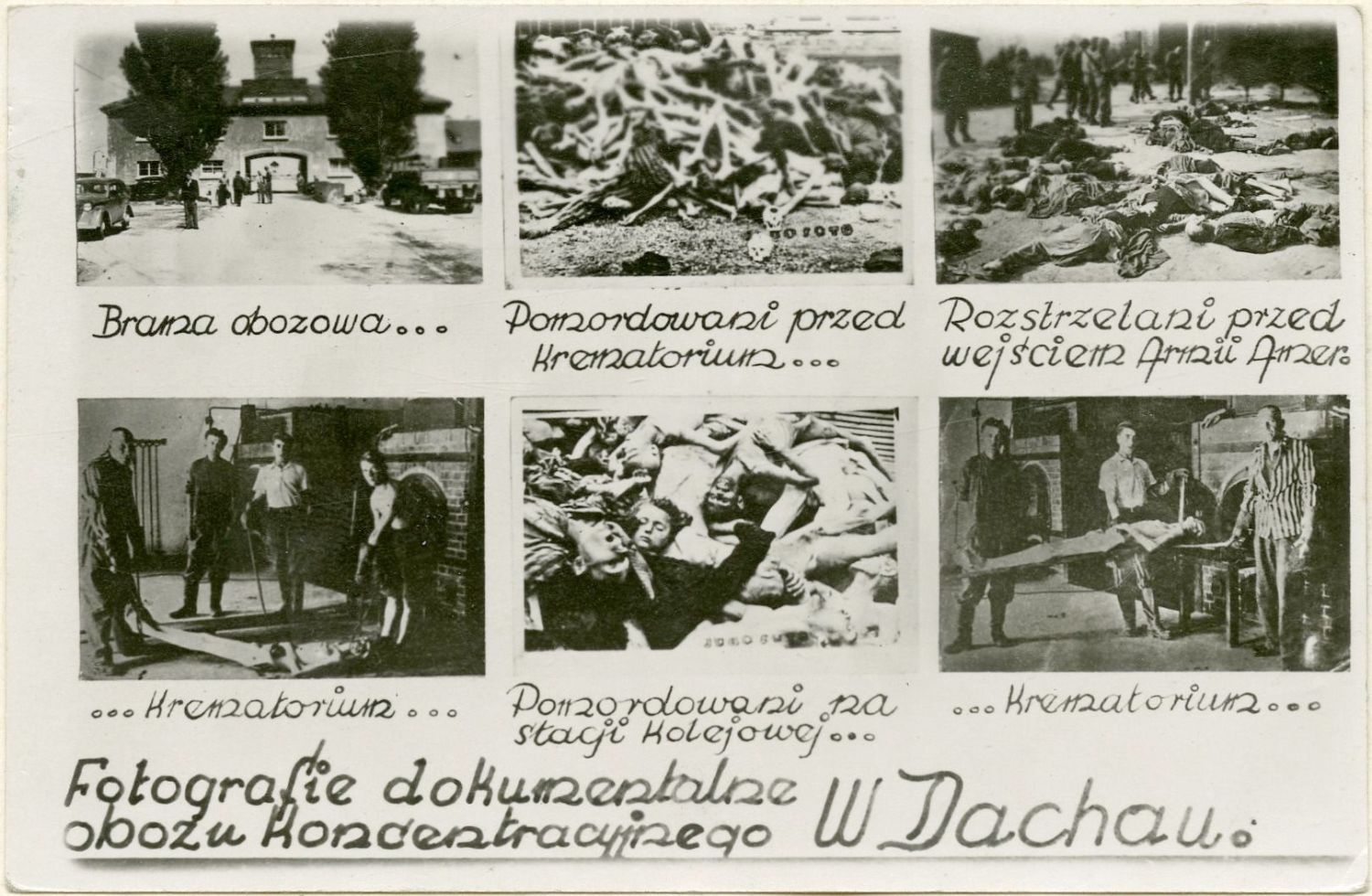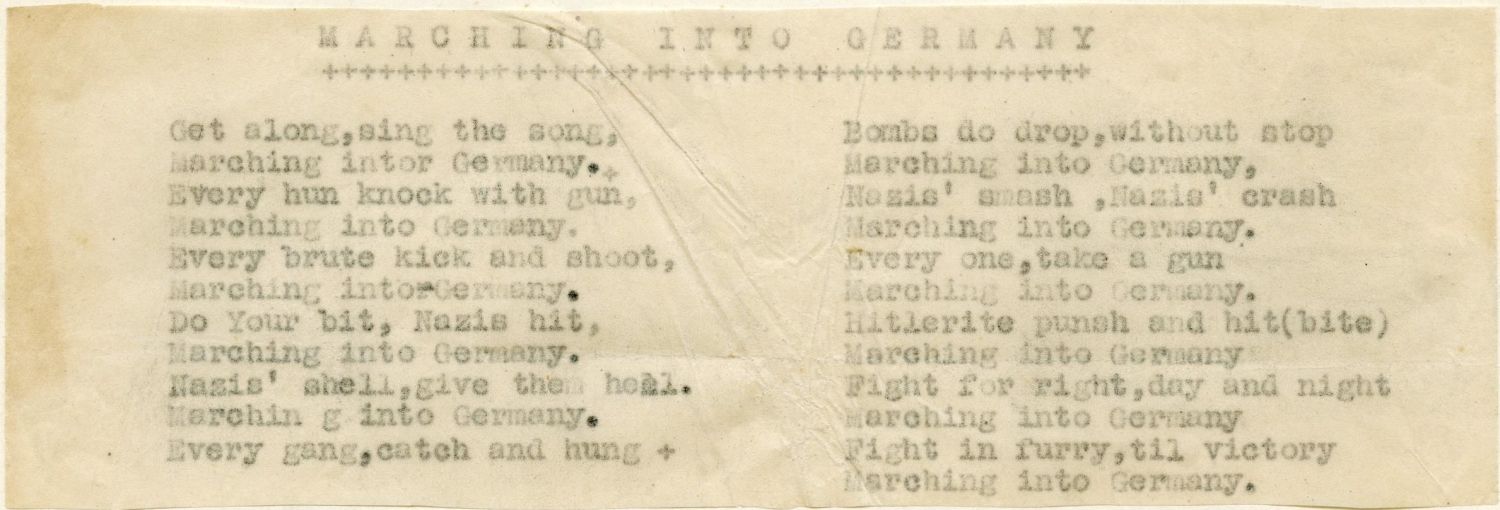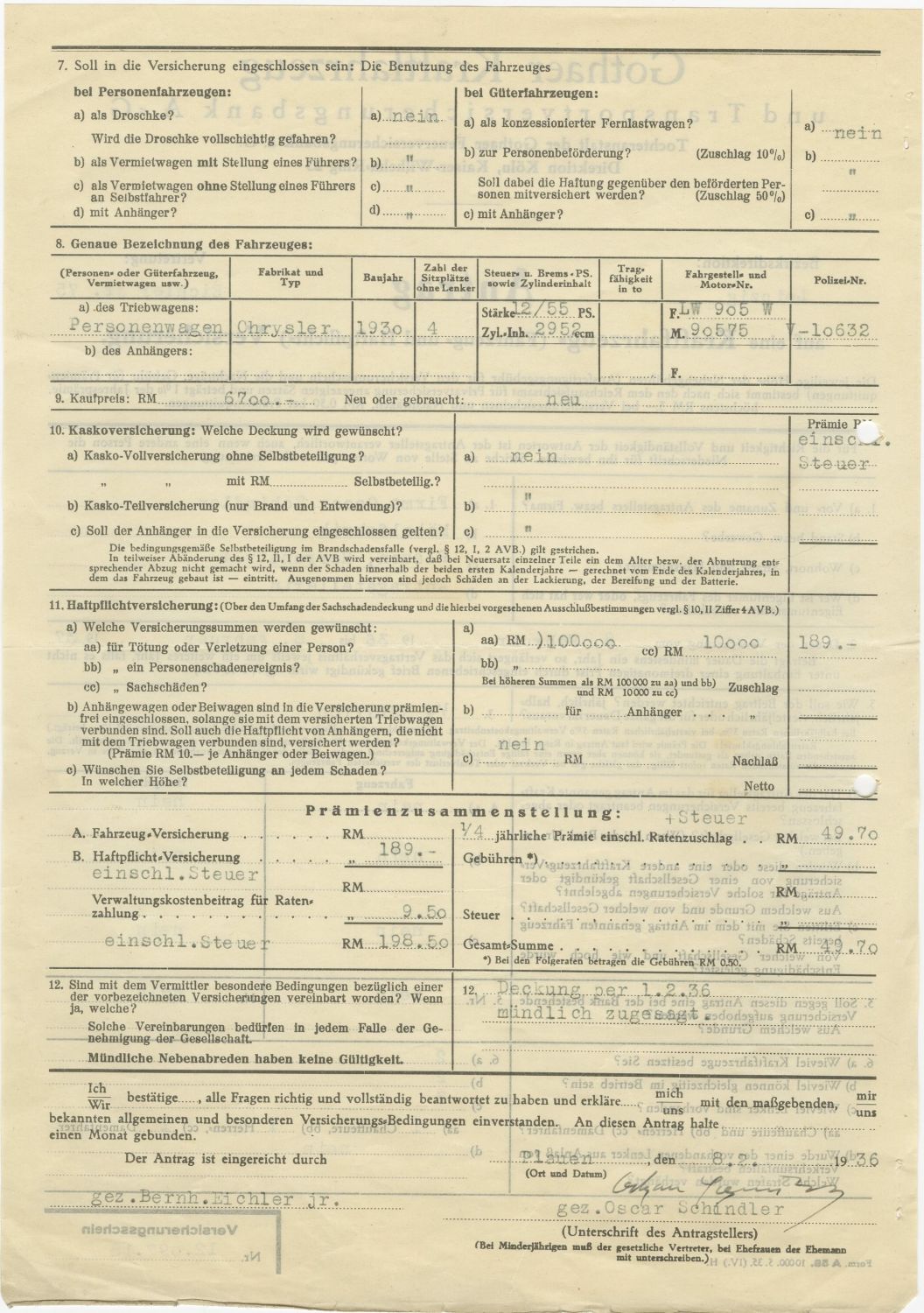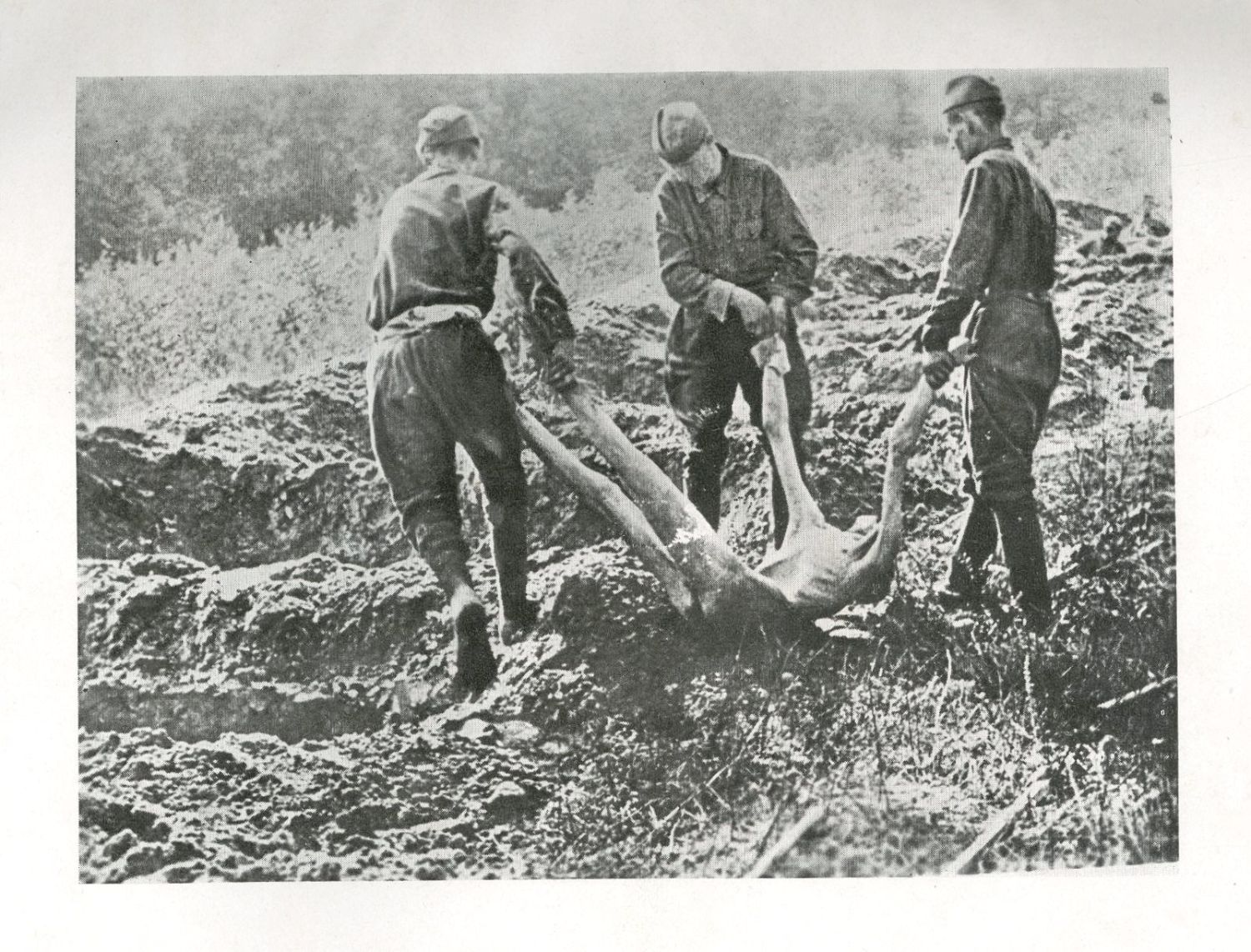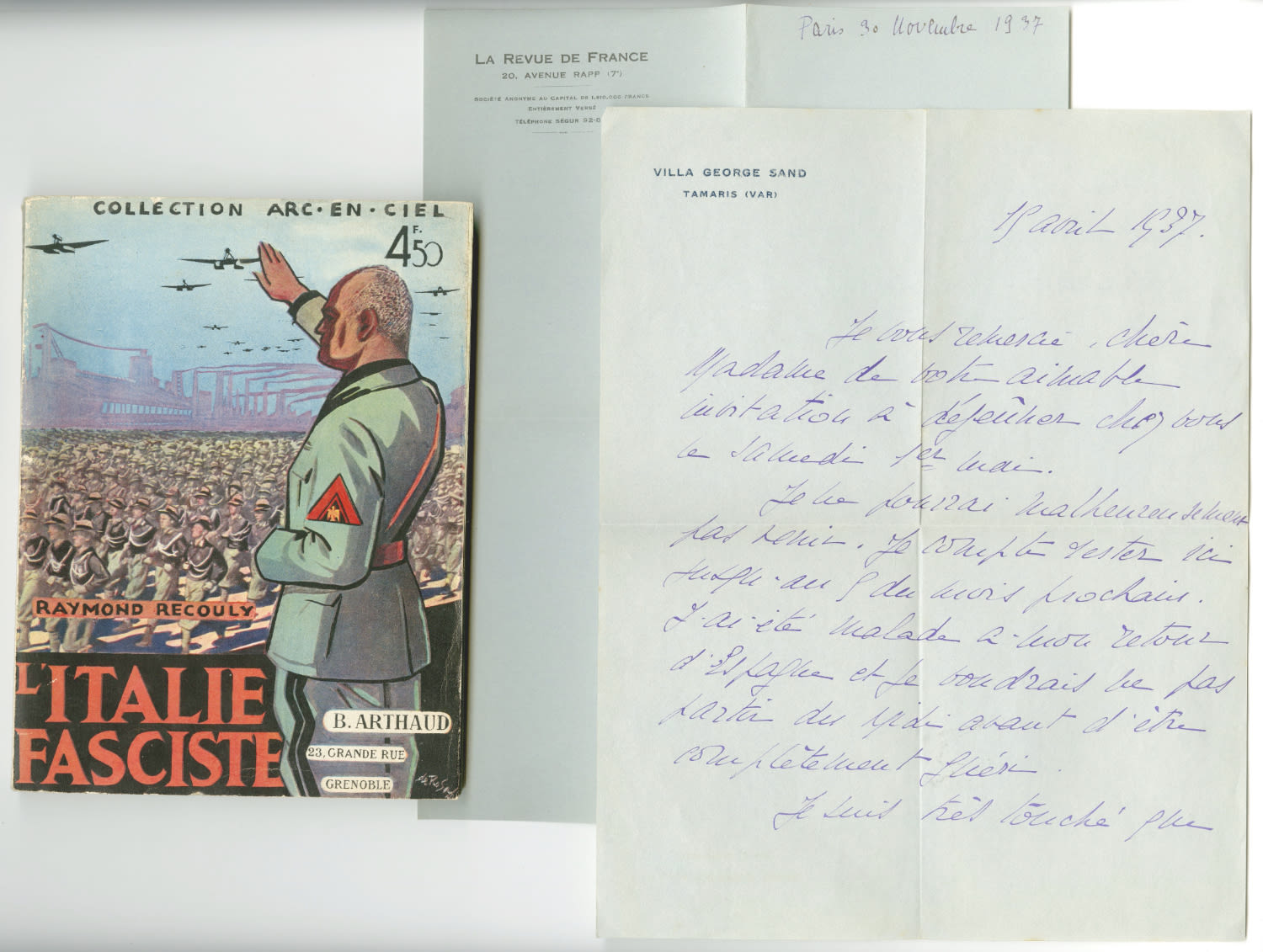A Remembrance and Revenge leaf designed by Zvi Kadushin - entitled "Feldafing 1945" (Displaced Persons Camp in Bavaria), In the center is a revenge song against the Nazis "Marching into Germany", and a large photograph divided into six small photographs of the horrors of the Dachau camp. Designed in the Faldafing IDP camp 1945, signed in the lower right corner: G. Kadisch - the famous underground photographer Zvi Hirsch Kadushin (known as George Kadisch). Feldafing, 1945.
In the center of the leaf is a rhymed poem printed on a typewriter (pasted on the page itself) titled "MARCHING INTO GERMANY" describing the entry of the liberating armies into Nazi Germany and its defeat: "Get along, sing the song, marching into Germany, Every hun knock with gun, Marching into Germany...Every brute kick and shoot, Marching into Germany... Do your bit, Nazis hit...Nazis shell, give them hell...Bombs do drop without stop... Hitlerite punsh and hit (bite)... Fight in furry, till victory Marching into Germany."
Underneath it is pasted an original photograph divided into six small photographs of harsh scenes from the Dachau camp - bodies of the dead, prisoners removing a body from the crematorium, and the entrance gate to the camp. Underneath it is written in Polish: "Tak zrobili Niemcy w Dachau" - "This is what the Germans did in Dachau". To the right and left up and down are paintings of David's Stars smashing the swastika.
George Kadish (Zvi Kadoshin 1915-1997) a resident of the city of Kaunas, was a photography enthusiast who managed to secretly and privately take about 6000 photographs in the Kaunas ghetto. His work as an x-ray technician in a German military hospital gave him access to photographic materials and development media. He developed various techniques for hiding the camera and secretly photographing through clothing. In his famous photographs can be seen the Jews who were concentrated between the ghetto fences, Jews with their belongings, people in forced labor, acts of murder, children and old women, and more. In some of them, the subjects are seen looking straight at the camera. Kadish also photographed the deportation of the Jews to the labor camps in Riga and Estonia and to the concentration camps. He hid his photographs and went into hiding himself before the liquidation of the ghetto. Thanks to this he and some of his photographs survived. After the surrender of Nazi Germany in May 1945, Lithuania traveled to the American occupation zone in Germany and arrived at the Landsberg displaced persons camp, where he stayed until 1946. In Landsberg he continued to document the life in the camp, and there he also presented his collection of photographs for the first time to the camp survivors. He also presented his photographs at the first Congress of the survivors held after the war in Munich, Germany, January 1946, and at the DP camp in Feldafing. Later he immigrated to New York and worked as a mechanical engineer and inventor. In 1982, he donated a large part of his collection to the Beit Hatfusot archives, including about 2,000 negatives he took in Kaunas ghetto between the years (1942-1944) and about 1,000 photographs from the displaced persons camp in Landsberg (1945-1946).
The Feldafing DP Camp in Bavaria was the first displaced persons camp for freed Jewish prisoners who survived the Holocaust from the concentration camps. The camp was opened by the United States Army on May 1, 1945 as an emergency measure to house Hungarian Jews who were in cattle cars on the train, which was released near the Tussing train station. Social life, educational, cultural and religious institutions existed in the camp, and several newspapers were even published there. In 1946, about 4,000 Jews lived in Feldafing and on Passover 1951, 1,585 displaced Jews remained in the camp. The camp passed to German administration on December 1, 1951 and was closed in March 1953.
Photos from the exhibition of Kadushin's photographs that took place in the Feldafing IDP camp
see here , And see also "Photo Flashes - Photography during the Holocaust", Yad Vashem Publishing 2018, page 154 the chapter on "Zvi Kadushin an underground photographer in the Kaunas ghetto".
leaf: 28x22 cm. Very good condition.



